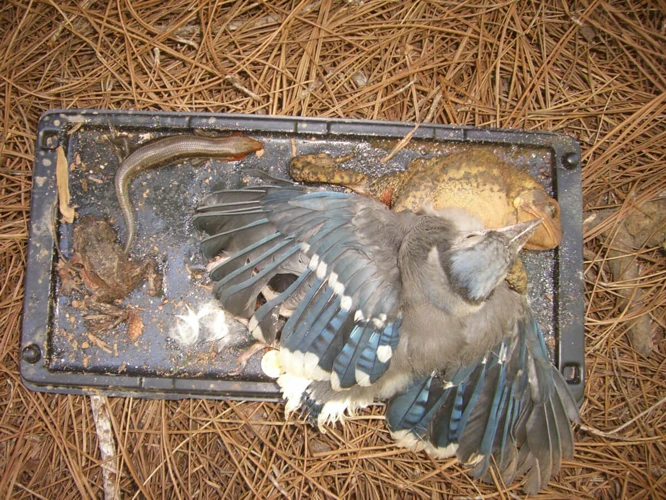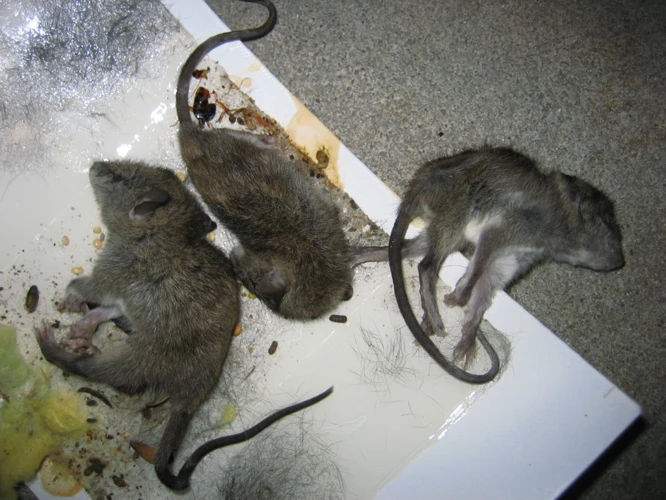Dealing with a rodent infestation can be distressing, and when you find yourself in need of rat glue trap removal, it’s essential to approach the situation with a level of care and understanding for the animal involved, despite the inconvenience it may have caused.
Assessing the Situation: Safety First
Upon discovering a rodent caught in a glue trap, it is critical to prioritize safety. Wearing gloves is a must to prevent any direct contact with the rat, which could lead to bites or the transmission of diseases. Assess the rat’s condition and consider its stress levels while preparing to deal with the situation effectively.
Required Supplies for Humane Removal
To ensure a humane approach to the dilemma, gather the necessary supplies, which should include heavy gloves, a cardboard box, and a cloth. Additionally, prepare a mixture of cooking oil and dish soap to help in loosening the glue, should you opt for a release.
How to Kill a Rat Humanely
While some may opt for releasing the rat, others may decide that how to kill a rat humanely is the more practical approach to prevent future infestations. This decision should not be taken lightly, and the method chosen should cause the least amount of distress possible.
Glue Trap Rat Euthanasia: Step-by-Step Guide
Glue trap rat euthanasia is a somber task that requires a calm demeanor. The most humane method involves using carbon dioxide (CO2) to peacefully euthanize the animal. This process should be carried out by a professional or after thorough research to ensure it’s done correctly and compassionately.
Preventing Rat Suffering During Euthanasia
It’s imperative to focus on preventing rat suffering during the process. Ensure that the CO2 levels rise slowly within a sealed container to gradually displace oxygen, leading to unconsciousness and eventually, a painless death. Quick and considerate actions during this process are key to minimizing distress.
Stuck Rat Solution: Releasing a Rat from a Glue Trap
If you’re seeking a non-lethal stuck rat solution, releasing the rodent is a viable option. This method requires patience and care to avoid causing additional harm to the animal or yourself.
Techniques for Safely Freeing the Rat
Use the mixture of cooking oil and dish soap to gently massage the rat’s stuck areas, slowly working to free it from the adhesive. This should be done with utmost caution to prevent injury to the animal and to protect yourself from potential aggression.
Post-Release: Ensuring Rat Survival
After successfully freeing the rat, place it in a cardboard box lined with a cloth to allow it to clean off any remaining glue. Release the rat far from residential areas to give it a chance at survival without posing a risk to homes.
Disposing of Rats in Glue Traps
Once the difficult decision has been made, proper disposing of rats in glue traps is the next step. This must be done with both respect for the animal and adherence to local regulations.
Safe Disposal Practices
Dead rodents should be placed in a plastic bag and sealed before being disposed of in the trash. Always wear gloves during this process and wash your hands thoroughly afterward to prevent the spread of any pathogens.
Environmental Considerations
Consider the environmental impact of glue traps and seek out biodegradable options if possible. Be conscious of where and how you dispose of these items to minimize harm to wildlife and the ecosystem.
DIY Rat Elimination: Effective Use of Glue Traps
Managing a rodent problem on your own can be a daunting task. DIY rat elimination using glue traps can be effective if done correctly and responsibly.
Best Bait for Glue Traps: Attracting Rats Effectively
To increase your chances of success, choosing the best bait for glue traps is crucial. Foods with strong scents such as peanut butter or bacon are particularly enticing to rats and can be used to lure them onto the sticky surface.
Placement Strategies for Maximum Efficiency
Strategically placing glue traps along walls where rats are known to travel can significantly enhance your chances of capturing these pests. Avoid placing traps in the open, as rats are more likely to travel along perimeters.
Preventing Future Infestations: Rat Pest Control
After tackling an immediate infestation, long-term rat pest control measures are necessary to prevent future problems. A multi-faceted approach is often the most effective.
Securing Your Home Against Rats
Identify and seal any entry points into your home, including gaps around pipes and under doors. Ensure that food is stored in rodent-proof containers and maintain a clean environment to deter these unwelcome guests.
Natural Deterrents and Repellents
Employ natural deterrents such as peppermint oil or predator scents to discourage rats from entering your space. These methods can be a non-toxic alternative to traditional poisons and traps.
Glue Trap Safety: Protecting Your Home and Family
When using glue traps, glue trap safety should be a top concern. These traps can pose risks not only to rodents but to pets and children if not used responsibly.
Proper Handling and Precautions
Always place glue traps in areas inaccessible to non-target animals and check them frequently. If a non-target animal is accidentally caught, vegetable oil can typically free them without harm.
Alternatives to Glue Traps
Considering alternatives to glue traps, such as snap traps or live catch traps, can be a more humane and safer option for your household and the environment.
Conclusion: Ethical and Effective Rat Control
Effective rat control is not just about eliminating the pests but doing so in an ethical and humane manner. The welfare of the animals and the safety of your home should always be considered.
Summary of Humane Rat Control Methods
Humane rat control methods range from releasing trapped animals to employing natural deterrents. When euthanasia is necessary, it should be performed with the utmost care to prevent suffering.
If you’re dealing with the unfortunate situation of having a rat stuck in a glue trap and are looking for a humane way to address it, you may also encounter other creatures facing the same plight. For those who are seeking guidance on freeing different animals from these sticky situations, we offer resources that could help. Discover how to carefully remove a snake with our guide on how to get a snake off a glue trap. If you find a lizard caught in a similar predicament, our article on how to get a lizard off a glue trap might be of assistance. Lastly, for advice on the proper disposal of glue traps after use, particularly for rats, check out our suggestions on how to dispose of a rat glue trap. These guides aim to provide you with humane and effective solutions for dealing with glue trap incidents.
Final Thoughts on Responsible Pest Management
Responsible pest management involves making informed decisions that balance effectiveness with ethics. Whether it’s through DIY rat elimination or professional help, the goal should always be to resolve rodent problems with consideration for all beings involved.


